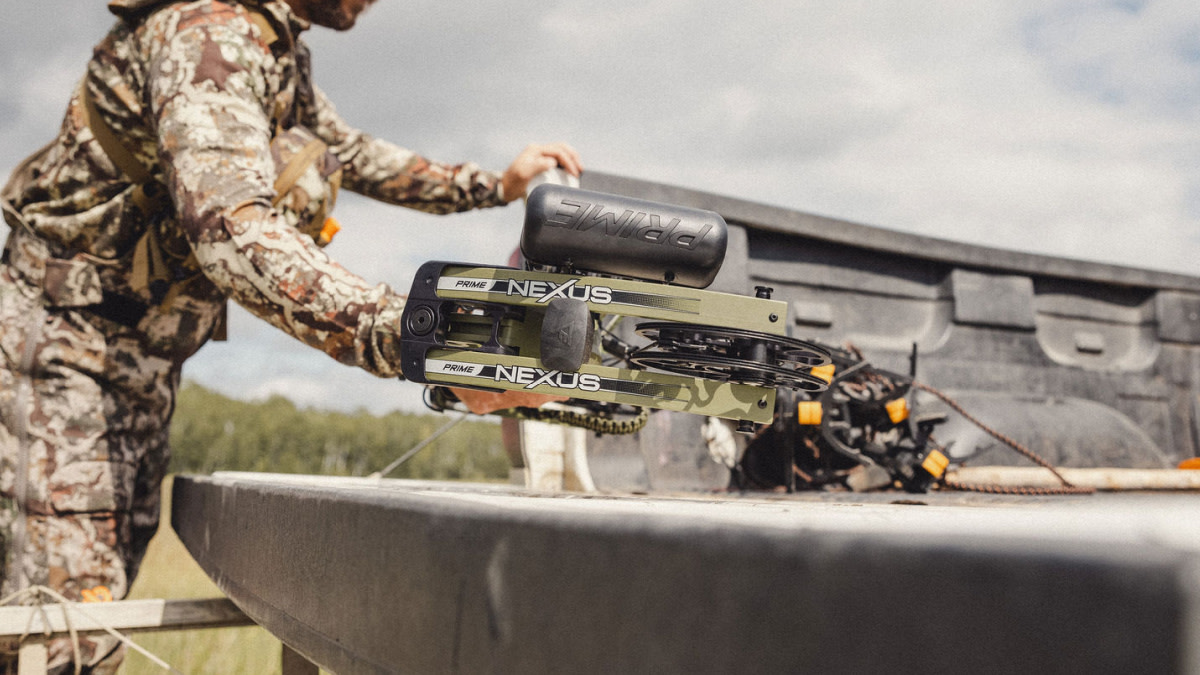
Nothing can spoil a hunting trip like a broken bow limb and busted arrows.
Flying across the country to chase whitetails means handing off your most important gear and hoping for the best. Although airlines are improving, nearly 25 million pieces of baggage are mishandled each year.
After dropping thousands to outfit your rig and plan an out-of-state hunt, you should do everything in your power to ensure your bow arrives unscathed and ready to hunt.
Pick a Solid Case
After you’ve meticulously micro-adjusted your rig, it will be tossed, stacked, flipped, and dropped en route to your hunting destination. Investing in a bow case that’s built to handle this abuse is the best way to prevent serious damage to your setup.
David Stagg from hunting and fishing storage company Plano said that while some soft-side and EVA cases might be advertised as airline-approved, rugged hard-side cases are ideal for flying.
Some hard-side cases are constructed with cheap plastic shells that can crack and dent rather than industrial-strength materials that can reliably protect a rig. Stagg suggests looking for durable designs that are waterproof and shockproof with heavy-duty, airline-approved components such as dual-stage latches, pressure release valves, and molded, lockable tabs.
Inside, a good case should sport multiple layers of high-density and pluck-to-fit foam to custom-fit and cushion your bow.
High-quality handles, wheels, and an overall lightweight build will make transportation much easier through the terminal. And a TSA-approved lock attached on the outside will keep your bow and accessories secure.
Pack Like a Pro
Pluck-to-fit foam and tie-down straps can usually hold your bow in place but filling the empty space inside your case will keep everything snugly secure. Plus, it can take some of the bulk and weight from your other baggage. Carefully wrap your hunting clothing around the cams, sight, and other accessories so they won’t budge in transit.
Even if your bow case has built-in arrow holders, consider sticking them in an arrow tube for an added layer of protection from bending and breakage in the air. I’ve seen hunters open their bow cases back at camp only to find carbon shafts snapped in half following a TSA inspection.
Pack broadheads—mechanicals especially—in a dedicated case inside the bow case so they don’t deploy, break, or cut a TSA inspector rifling through your gear.
Bows, arrows, and broadheads will of course belong in checked baggage, but it’s a good rule of thumb to keep release aids and other accessories out of your carry-on and in your bow case too.
When you’re done loading up, nothing should be free-floating in your bow case.
Plan Ahead
Although bows aren’t subject to all the same regulations as firearms, some airports, airlines, and agents may treat yours like any other weapon. So arrive early and expect delays when checking in for your flight.
Because most bows tip the scales at just a few pounds, weight shouldn’t be an issue, even if you load your case up with other gear to protect your rig. But traditional bows and some cases might exceed standard baggage measurements, so you could be stuck paying hefty oversize surcharges if you don’t do your research ahead of time.
As with any checked items, make sure your name and contact information are clearly marked directly on your bow case or on an attached luggage tag.
If you’re a U.S. resident traveling internationally, pre-register your bow with U.S. Customs and Border Protection to save time and headache at the airport. Form 4457 is valid for the lifetime of the bow and certifies you didn’t purchase it abroad, so you can’t be charged any duty fees when you return.
Once you arrive at your destination, don’t be surprised if your bow doesn’t make it to baggage claim with the rest of your luggage. Many airlines send bows—along with other firearms and other weapons—to the airline office or other designated area for travelers to claim them.
Even if you do everything right, expect some casualties along the way. TSA inspections can result in gear getting shifted around, and cases can rattle around the cargo hold. Pack spares or duplicates of everything possible as well as tools to tweak your setup and locate the nearest pro shop or sporting goods store just in case.
When you arrive at camp, fire a few practice shots to ensure you’re still dialed in and ready to hunt.







Conversation